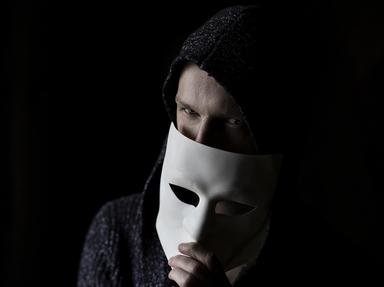Quiz Answer Key and Fun Facts
1. The Shroud of Turin was first recorded in history as a display for profit in 1350-1357. It was said to be the original burial shroud of Jesus, but the investigation conducted by a local bishop at the time included an interview with "the artist who painted it."
Who was the first exhibitor of the cloth?
2. "The Beale Papers," published in 1885, is the name of a pamphlet that details the story of a treasure ostensibly buried by a man named Thomas J. Beale some time between 1819 and 1821. The anonymous author describes how he came to ruin searching for the treasure. The papers include the author's personal narrative of his search and ruin, a brief history of Beale, and three ciphers, one decrypted, which are said to be the work of Beale. The author deciphered one text, but was unable to decipher the other two, and now published the ciphers in the hope of recouping some of his losses.
The author knew in general terms where the treasure was, but could not pinpoint the exact location. In what general area was this treasure supposedly buried?
3. The "Surgeon's Photo" is a photo taken around 1934, purported to be of a cryptid, or undiscovered animal. It sparked a search for this animal, and blew up a tourist industry in the area where the photo was supposedly taken. In 1994, one of the participants in manufacturing it confessed that it was a fake, although many skeptics had suspected this for some time.
For what cryptid did this photo begin a searching craze?
4. The rumor that Beatle Paul McCartney died began on September 17, 1969, when Tim Harper wrote an article for the "Drake Times-Delphic," the student newspaper of Drake University in Des Moines, Iowa. The article, "Is Beatle Paul McCartney Dead?" didn't really spark the legend, though. That phenomenon began on October 12, when a Detroit DJ named Russ Gibb took an on-air call. The caller, Tom Zarski urged the DJ to play a Beatles' song backwards, and said he would hear the words "Turn me on, dead man." Gibb played the record, and was shocked to find out that Zarski was right. What was the song?
5. A bestseller called "Michelle Remembers" hit the bookstores in 1980. It chronicled the satanic ritual abuse of a young girl, beginning when she was five years old. Michelle had supposedly repressed all memory of these experiences until she entered therapy, and then remembered them, mostly under hypnosis. What is the term for this type of therapy?
6. In 1981, reporter Janet Cooke won, then had to return, the Pulitzer prize for an article called "Jimmy's World," because her newspaper article turned out to be entirely fiction. Who was the imaginary Jimmy?
7. Peter Popoff was a televangelist with what seemed like psychic abilities to know who was at his prayer meetings, and what their specific needs were. He was busted by skeptic, paranormal debunker, and stage magician James Randi, who discovered what about Popoff?
8. Milli Vanilli was an R&B, pop, and dance music project created in 1988. The duo consisted of Fab Morvan and Rob Pilatus. Their debut album won a Grammy Award for Best New Artist. Disaster struck when it was revealed that the front men for the songs didn't do any of the actual singing, and had been hired for their looks and dance moves, and simply lip-synced to the vocals of others. It happened when the vocal track began to skip during a performance. They had to give back their Grammy. Their career was over, and Pilatus committed suicide.
In what country was he duo originally formed?
9. Writing under the pseudonym "Binjamin Wilkomirski" a man born Bruno Grosjean adopted a false identity as a Holocaust survivor and published his fictional memoir in 1995. In English it was published as "Fragments: Memories of a Wartime Childhood." It was quickly debunked in August 1998. Who debunked it?
10. Tania Head claimed to have survived the 9/11 tower collapse, lost an arm, and had it reattached, and also lost her fiancÚ; she became a spokesperson for many survivors, and a representative of many survivors' groups. She was a sought-after speaker. After months in the limelight, it turned out that not only was she not in the twin tower collapse, she wasn't even in the US on 9/11. She was in her native country. What was it?
Source: Author
RivkahChaya
This quiz was reviewed by FunTrivia editor
bloomsby before going online.
Any errors found in FunTrivia content are routinely corrected through our feedback system.

